Blog » Statistics » 103 Key Hypnotherapy statistics for 2022
103 Key Hypnotherapy statistics for 2022
Here is the complete, up-to-date list of the most important statistics related to hypnotherapy and hypnosis that I have put together after going through more than 65 sources.
In this article, you will find verified stats about:
- The past, present and future of hypnosis
- Weight loss and addictions
- Pain and stress
- Health disorders
- demographics
- Behavioral issues
And a whole lot more.
Let’s dive right in!
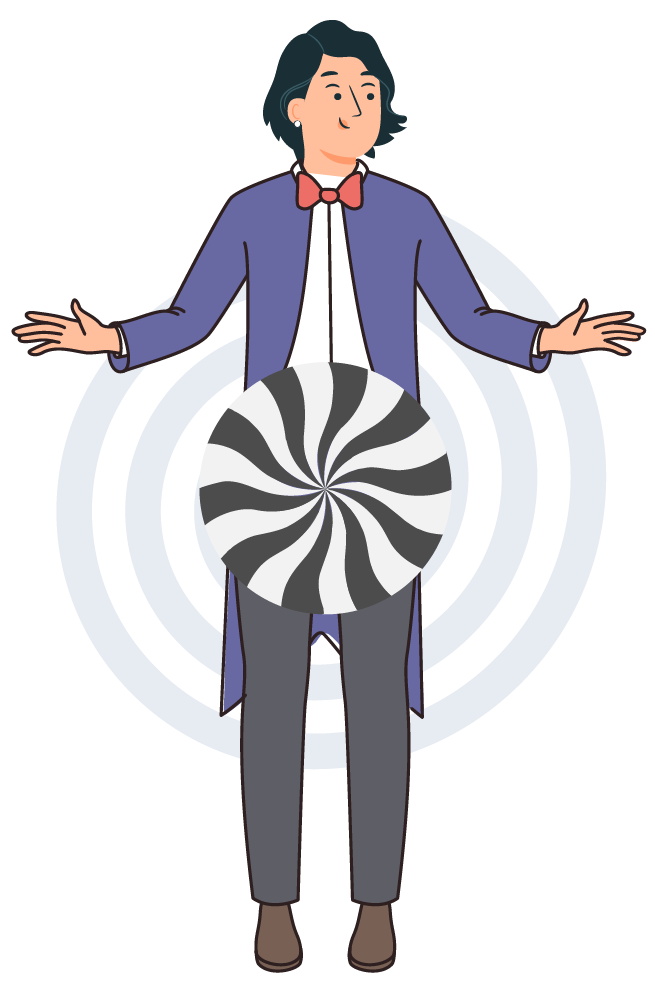
chapter 1:
The past present and future of hypnosis.
Let’s begin with the history of hypnosis, the effect it has on people, the salary of hypnotherapists and the degree hypnotherapists have. I have got these stats by researching various articles, reports, studies and surveys. You can thank me later!

- Hypnosis has been publicly accepted and known for more than 200 years. The advent of hypnosis can be traced back to Frank Mesmer(a physician) in the 18th century. He used hypnosis to treat patients. This method was named after him- “Mesmerism” and was used by medical practitioners later on.
- Between 10% to 15% of people are very responsive to hypnosis. (source)
- Approximately 10% of adults are considered difficult or impossible to hypnotize. (source)
- Roughly 90% of people report being aware of everything that happens.
- Clinical research regards hypnotherapy as the briefest form of therapy. The average number of sessions required for any effects/changes to take place was around 4 – 6.
- The average yearly income for a hypnotherapist in the US is $55,140. (source)
- 50.0% of hypnotherapists have a bachelor’s degree. In terms of higher education levels, 21.4% of hypnotherapists have master’s degrees .(source)
- Between 2018 and 2028, the career is expected to grow 14% and produce 26,100 job opportunities across the U.S. (source)
chapter 2:
Weight Loss and Addictions
Here are stats about weight loss and addictions (including drugs, smoking, cocaine etc. Hypnotherapy has a wide range of applications in various fields. Let’s dive right in.

Weight Loss
- Pertaining to weight loss, research has found that compared to people undergoing cognitive-behavioral therapy (CBT), those who undergo cognitive behavior therapy coupled with hypnosis tend to lose significantly more weight. After four to six months, those undergoing CBT + hypnosis dropped more than 20 pounds, while those who just did CBT lost about half that amount. The hypnosis group also maintained that weight loss during an 18-month follow-up period, while the CBT-only group tended to regain some weight.
- Investigated the effects of hypnosis in weight loss for 60 females, at least 20% overweight. Treatment included group hypnosis with metaphors for ego-strengthening, decision-making and motivation, ideomotor exploration in individual hypnosis, and group hypnosis with maintenance suggestions. Hypnosis was more effective than a control group: an average of 17 lbs lost by the hypnosis group vs. an average of 0.5 lbs lost by the control group, on follow-up.(source)
- 109 people completed a behavioral treatment for weight management either with or without the addition of hypnosis. At the end of the 9-week program, both interventions resulted in significant weight reduction. At 8-month and 2-year follow-ups, the hypnosis subjects were found to have continued to lose significant weight, while those in the behavioral-treatment-only group showed little further change.(source)
- A review of 6 studies published in the September 2005 issue of the International Journal of Obesity found convincing documentation of hypnotherapy’s ability to aid weight loss. Other small studies show that participants who undergo hypnotherapy can lose as much as 12 to 15 pounds.(source)
- Hypnosis Subjects Lost More Weight Than 90% of Others and Kept it Off.
- Those who received the hypnosis lost more weight than 90 percent of those not receiving hypnosis and maintained the weight loss two years after treatment ended.(source)
- Not everyone benefits equally from hypnosis. About 20% of people show a “large” response to it, while the same percentage of people don’t respond much at all. The remaining 50% to 60% of people fall somewhere in between. (source)
- Reportedly, hypnosis has a 93% success rate with fewer sessions than both behavioral and psychotherapy, according to research studies. This led researchers to believe that for changing habits, thought patterns, and actual behavior, hypnosis was not only the most effective method but that it needed less time/sessions than other forms of therapy. (Alfred A. Barrios/1970).”(source)
- The hypnotherapy group trended toward greater improvement in OAB-q quality-of-life scores compared with the behavioral therapy group (67% vs 42% improvement), although this did not reach statistical significance (P = 0.07).(source)
Drug Addiction
- An open, non-controlled study found an abstinence rate of 62% at one year follow up.(source)
- Treatment of opium addiction: The relapse rate was 40% (4/11) in the hypnotherapy group compared to 73% (8/11) in the control group, P > .05. For the participants in the hypnotherapy group who reported the symptoms prior to hypnotherapy, the benefits included improvements in insomnia, 88% (7/8); restlessness, 80% (8/10); pain, 60% (3/5); and autonomic disturbances, 33% (2/6).(source)
Smoking
- 87% Reported Abstinence From Tobacco Use With Hypnosis.
A field study of 93 male and 93 female CMHC outpatients examined the facilitation of smoking cessation by using hypnosis. At 3-month follow-up, 86% of the men and 87% of the women reported continued abstinence from the use of tobacco using hypnosis.(source)
- The results from more than 600 individual studies, involving over 72,000 people from America and Europe were analyzed and scrutinized. The findings state that on average, hypnosis is over three times as effective as nicotine replacement methods and 15 times as effective as trying to quit alone.(source)
- Hypnosis is the most effective way of giving up smoking, according to the largest ever scientific comparison of ways of breaking the habit. A meta-analysis, statistically combining results of more than 600 studies of 72,000 people from America and Europe to compare various methods of quitting. On average, hypnosis was over three times as effective as nicotine replacement methods and 15 times as effective as trying to quit alone.(source)
- A 2007 randomized trial of 286 smokers found that 20% of people who received hypnosis managed to quit, compared to 14% of those receiving standard counseling.
- A study of 71 smokers showed that after a two-year follow-up, patients that quit with hypnosis were twice as likely to remain smoke-free than those who quit on their own.(source)
- 81% Reported They Had Stopped Smoking After Hypnosis.
- 30 smokers enrolled in an HMO were referred by their primary physician for treatment. Twenty-one patients returned after an initial consultation and received hypnosis for smoking cessation. At the end of treatment, 81% of those patients reported that they had stopped smoking, and 48% reported abstinence at 12 months post-treatment.(source)
- 90.6% Success Rate for Smoking Cessation Using Hypnosis.
- Of 43 consecutive patients undergoing this treatment protocol, 39 reported remaining abstinent from tobacco use at follow-up (6 months to 3 years post-treatment). This represents a 90.6% success rate using hypnosis.(source)
- Hypnosis is the most effective way of giving up smoking, according to the largest ever scientific comparison of ways of breaking the habit. A meta-analysis, statistically combining results of more than 600 studies of 72,000 people from America and Europe to compare various methods of quitting. On average, hypnosis was over three times as effective as nicotine replacement methods and 15 times as effective as trying to quit alone.(source)
- Hypnosis Patients Twice As Likely To Remain Smoke-Free After Two Years.
- A study of 71 smokers showed that after a two-year follow-up, patients that quit with hypnosis were twice as likely to remain smoke-free than those who quit on their own.(source)
- Hypnosis Shows 77 Percent Success Rate for Drug Addiction.
- The treatment has been used with 18 clients over the last 7 years and has shown a 77 percent success rate for at least a 1-year follow-up. 15 were being seen for alcoholism or alcohol abuse, 2 clients were being seen for cocaine addiction, and 1 client had a marijuana addiction.(source)
- Another study of 93 males and 93 females used hypnosis to help them stop smoking. At 3 months follow-up, 86% of men and 87% of women continued to stay away from smoking tobacco. (SOURCE)
Cocaine Addiction
- Hypnosis was successfully used to overcome a $500 (five grams) per day cocaine addiction. The subject was a female in her twenties. After approximately 8 months of addiction, she decided to use hypnosis in an attempt to overcome the addiction itself. Over the next 4 months, she used hypnosis three times a day and at the end of this period, her addiction was broken, and she has been drug free for the past 9 years. Hypnosis was the only intervention, and no support network of any kind was available.(source)
- Significant differences were found on all measures. The experimental group had significantly less discomfort and illicit drug use, and a significantly greater amount of cessation. At six months follow up, 94% of the subjects in the experimental group who had achieved cessation remained narcotic free.(source)
IBS Irritable Bowel Syndrome
- Hypnotherapy had the same effect as the dietary intervention for alleviating gastrointestinal symptoms. In both treatment groups, of 70%patients improved in quality of life and a range of individual symptoms of IBS such as bloating, diarrhea, constipation, cramping, and abdominal pain.(source)
- Irritable bowel syndrome (IBS) is a very common functional disorder of the gastrointestinal (GI) system. IBS is thought to be due to changes in the way the gut functions, but is not associated with any observable structural changes to the gut. Up to 15% of adults suffer from IBS and related symptoms.(source)
- Hypnotherapy is one of the most successful treatment methods, giving 80+% success rate for abdominal pain and distension. It often results in assisting with other problems such as migraine and tension headaches.(source)
Randomized Controlled Trial
- Roberts et al (2006) conducted a randomized controlled trial of gut-directed hypnotherapy for IBS. In contrast to many other studies which have taken patients from secondary (specialist) care this study took patients from primary care, where the majority of IBS cases are seen. Patients either received standard care or standard care + gut-directed hypnotherapy. After 3 months, at the end of treatment, patients in the intervention group improved more than those in the control group on measures of pain and diarrhea. However, the patients in standard medical care continued to improve and differences were not evident at 12 months follow-up except for reduced medication usage in the hypnosis group.
- In 1984 Compared 15 patients randomly assigned to hypnotherapy with 15 patients. assigned to psychotherapy plus placebo pills. All patients had severe unresponsive symptoms at the beginning of the study. The hypnosis group showed a greater improvement in well-being and bowel activity, and showed no relapses during the three-month follow-up.(source)
- Palsson et al (2006)Compared patients given a home treatment hypnosis program with those given standard medical care. By three months 53% of the hypnosis group had improved compared to 26% of the controls.(source)
- Houghton et al (1996) compared 25 IBS patients given hypnosis with 25 patients treated with other methods and demonstrated greater benefits in the hypnosis group.(SOURCE)
chapter 3:
Pain and stress
Did you know that hypnosis can be used to deal with pain and stress? Let us look into the stats of hypnosis used in the areas of recovery, surgery, stress, relaxation and even dyslexia.

Pain
- Hypnotized volunteers are up to 50% more capable of handling painful stimuli (Faymonville etal., 2006). Scans reveal that hypnosis can lower activity in the brain’s anterior cingulate cortex ,linking sensory stimuli to emotional and behavioral responses, and switch off pain signals.(source)
- Hypnosis was found to be effective in reducing pain and discomfort associated with repeated unpleasant medical interventions in a study of children with cancer.(SOURCE)
- A strong potential of hypnosis for managing impotence has been documented in the medical literature since the 1960s, and this claim has been supported by recent clinical trials, 88% success rate was reported using hypnosis for impotence in almost 3000 patients. Using hypnosis and acupuncture, a 75% success rate was recorded in treating impotence.(source)
- This statistic shows the opinion of the French regarding the alternative medical practice of Hypnosis in 2019. According to the survey, 56 percent of respondents had a very good or rather good image of hypnosis. 24 percent of respondents did not know enough about this practice to pronounce a judgment. (source)
Healed from Fracture
- 2 studies from Harvard Medical School show hypnosis significantly reduces the time it takes to heal.
Study One: 6 weeks after an ankle fracture, those in the hypnosis group showed the equivalent of 8 and a half weeks of healing.
Study Two: 3 groups of people studied after breast reduction surgery. Hypnosis group healed “significantly faster” than supportive attention group and control group.(source)
- According to an article in the Harvard University Gazette, Hypnosis Helps Healing, by William J. Cromie, Carol Ginandes and Daniel Rosenthal, professor of radiology at the Harvard Medical School, published a report on their study of hypnosis to speed up the mending of broken bones. The result stood out like a sore ankle. Those who were hypnotized healed faster than those who were not. Six weeks after the fracture, those in the hypnosis group showed the equivalent of eight and a half weeks of healing.(SOURCE)
- The results showed a faster healing for the hypnosis group at week 9 of the experiment. X-rays revealed a notable difference at the edge of the fracture at week 6 of the experiment.(SOURCE)
Hypnosis Reduces Pain and Speeds up Recovery from Surgery
- Since 1992, we have used hypnosis routinely in more than 1400 patients undergoing surgery. We found that hypnosis used with patients as an adjunct to conscious sedation and local anesthesia was associated with improved intraoperative patient comfort, and with reduced anxiety, pain, intraoperative requirements for anxiolytic and analgesic drugs, optimal surgical conditions and a faster recovery of the patient. We reported our clinical experience and our fundamental research.(source)
- A significant reduction of pain and dysphoria was found following Hypnosis in a study of 19 patients with a variety of musculoskeletal disorders.(SOURCE)
Raised Self-esteem & Serenity, Lowered Impulsivity and Anger
- In a research study on self-hypnosis for relapse prevention training with chronic drug/alcohol users. Participants were 261 veterans admitted to Substance Abuse Residential Rehabilitation Treatment Programs (SARRTPs). individuals who used repeated self-hypnosis “at least 3 to 5 times a week,” at 7-week follow-up, reported the highest levels of self-esteem and serenity, and the least anger/impulsivity, in comparison to the minimal-practice and control groups.(source)
- Therapeutic hypnosis is safe and effective, and is a scientifically proven therapy for improving your health and well-being.
- A psychotherapy study published in American Health Magazine revealed the following recovery rates:
Dyslexia in Children
- In a study on Dyslexia, Crasilneck and Hall showed that over 75% of dyslexic children can be helped with direct hypnosis. Following hypnotherapy that included suggestions for improving performance and pronunciation, recognition of words became automatic and more rapid. The results in this study were as good as, or slightly better than, those reported by special behavior modifiers.(source)
Stress
- In a research study involving over 100 patients suffering from stress-related conditions it was found that 75% felt their symptoms were improving after 12 weeks of self-hypnosis practice, within one year 72% of the group reported complete remission of their symptoms as a result of the self-hypnosis.(source)
Relaxation
- A study of 20 individuals compared the use of self-hypnosis and relaxation therapy in managing anxiety over 28 days. Both groups were shown to have achieved significant reduction in psychological and physical symptoms of anxiety. However, the self-hypnosis group exhibited greater confidence in the positive effects of the treatment, higher expectation of success, and greater degrees of cognitive and physical improvement.(source)
chapter 4:
Health Issues
Dealing with health issues such as asthma, sexual issues, cancer, sleep disorders, phobias, childbirth, fertility etc. can be hard. However, hypnotherapy can be effective to reduce these issues. Let’s look into the stats of hypnotherapy being used to reduce/treat these issues.

Asthma
- Over a six-year period, 173 successive patients suffering from asthma were treated using self-hypnosis, 82% were either much improved or experienced total remission of symptoms.(source)
Sexual Issues
- In a study of 189 people with psychological issues relating to sex, it was proven that self-hypnosis combined with cognitive therapy was more effective than cognitive therapy alone. When self-hypnosis was taught, the number of sessions required was less, relapse was less likely, and clients expressed more satisfaction with the overall outcome.(source)
Cancer
- Women with metastatic breast cancer who received group Hypnosis therapy were able to reduce their pain experience by 50% compared to a control group. At a 10-year follow-up of these same women, the Hypnosis treatment group had double the survival rate of the control group. Both adolescent and adult cancer patients undergoing chemotherapy have fewer symptoms of anticipatory nausea and vomiting following Hypnotic interventions.(source)
- Results of a study of a 200 breast cancer patients who underwent a presurgical hypnosis intervention to improve post surgical side effects suggest that, to reduce post surgical nausea, clinical hypnotic interventions should be designed to specifically target patient expectancies and distress.(source)
Sleep Disorders
- A study conducted by Elkins et al. supports the efficacy of clinical hypnosis in improving the quality of sleep for cancer patients. During this study, 51 breast cancer patients (all female) were assigned to either five weekly sessions of hypnosis or a waitlist control group. The main outcome for this study was a reduction in hot flash occurrence. At the conclusion of the 5-week treatment period, not only did cancer patients report fewer hot flash related daily disturbances, but they also reported significant improvements in sleep quality, as well as fewer symptoms of anxiety and depression. This study provides an example of how hypnosis may be effective at treating a target symptom and improving the patient’s overall quality of life.(source)
Childbirth
- Hypnotherapy has been used successfully to prolong pregnancy and prevent premature delivery. In Britain 55% of birthing women using hypnosis required no medication for pain relief, compared with 22% of women in non-hypnosis groups. In two other reports 58% of women using hypnotic analgesia required no medication. And five other reports quoted 60-79% of women using hypnosis required no medication. (source)
- Hypnotherapy has been found to be highly effective in overcoming the feelings of Anxiety & Depression by uncovering the root causes, and helping to create the positive changes in the Subconscious mind in the form of new attitudes and behaviors, in addition to enhanced relaxation. Women with depression, when treated showed a 60 percent viable pregnancy rate within six months, contrasting with 24 percent when depression went untreated. (Journal of American Medical Women’s Association, 1999, vol.54).(SOURCE)
- Women who experienced depression following the failure of their first in vitro fertilization (IVF), had much lower pregnancy rates than their non-depressed counterparts during their second IVF cycle (Journal of Psychosomatic Research, 1993, vol. 37). (SOURCE)
- In another study subjects given hypnosis reported reduced pain, shorter stage 1 labors, less medication, higher Apgar scores, more frequent spontaneous deliveries than the other group. Some had lower depression scores after birth than the other groups. (source)
Phobias
- Student test anxiety : Students taught self-hypnosis showed a significant reduction in anxiety scores (maintained at 6-month follow-up) than a control group.
- Public speaking : The group who received hypnosis had a greater expectation for change and that change was achieved, than those who had non-hypnotic treatment.
- Fear of flying : 50% of patients afraid of flying were improved or cured after Hypnosis treatment.(source)
Warts
- Prepubertal children respond to Hypnotherapy almost without exception, although adults sometimes do not. Clinically, many adults who fail to respond to hypnotherapy will heal with individual hypnoanalysis (combination of hypnotherapy and psychotherapy) techniques. By using hypnoanalysis on those who failed to respond to hypnotherapy, 33 of 41 (80%) consecutive patients were completely cured. Self-hypnosis was not used.(source)
- There was a particularly interesting report of hypnosis used to treat a 7-year-old girl who had 82 common warts. The warts had been present for 12-18 months and were not amenable to any of the routine medical treatments. Hypnotic suggestions were given for the facial warts to disappear before warts from the rest of the body. After 2 weeks, eight of 16 facial warts were gone, with no other changes. After three additional biweekly sessions, all 82 warts were gone. This was, to our knowledge, the first reported case of systematic wart removal in children and the researchers concluded that there is an intimate relationship between psychological mechanisms and the immune system.(source)
- Published, controlled studies of the use of hypnosis to cure warts are confined to using direct suggestion in hypnosis (DSIH), with cure rates of 27% to 55%. Prepubertal children respond to DSIH almost without exception, but adults often do not.(source)
Fertility
- A research team from the Soroka University in Israel found that 28% of women in a group of 185 who were hypnotized became pregnant, compared with just 14% of those who were not. Hypnotherapy was used to relax the spontaneous womb contractions which can hamper the embryo transfer stage of IVF treatment. Dr Levitas commented that “Performing embryo transfer under hypnosis may significantly contribute to an increased clinical pregnancy rate”.(source)
- In another study, 55 percent of the woman in labour who used hypnosis were able to avoid an epidural, compared with 22 percent of the woman not given hypnosis.(source)
Hypnotherapy for anxiety disorders
- The 20 children in the group treated for anxiety disorders consisted of 10 boys and 10 girls, ranging in age from 7 to 17 years. The mean age for this group was 10.5 years, and their median age was 11 years. Seventy percent of the children in this group had follow-up hypnosis sessions. Six children (30%) had previously sought consultation, without parental assessment of effectiveness, from other professionals for anxiety disorders.(source)
- Reduce Anxiety: Hypnotherapy helps to reduce anxiety and blood pressure. Subjects from a 2006 study who received hypnotherapy reported their anxiety was cut in half, while those who did not receive hypnosis reported an increase in anxiety.(source)
- A 2019 meta-analysis of hypnosis as a treatment for anxiety found that “the average participant receiving hypnosis reduced anxiety more than about 79% of control participants,” also noting that “hypnosis was more effective in reducing anxiety when combined with other psychological interventions than when used as a stand-alone treatment.” .(source original study)
- Of the 20 children with anxiety disorder, 55% had good-to-excellent long-term results, rating a 4 (good) to 5 (excellent) on a scale of 1 to 5. Seventeen children were treated for nocturnal enuresis and 59% had good/excellent ratings for long-term results. The 16 children with insomnia had long-term good/excellent long-term effectiveness of 37.5%. (source)
Blood Pressure
- A trial compared Hypnosis with biofeedback or a combination of both. All groups had significant reduction in blood pressure. However, at six-month follow-up only patients receiving Hypnosis had maintained the reduction.(SOURCE)
Cognitive Hypnotherapy for Depression
- An Empirical Study: To investigate the effectiveness of cognitive hypnotherapy (CH), hypnosis combined with cognitive behavior therapy (CBT), on depression, 84 depressives were randomly assigned to 16 weeks of treatment of either CH or CBT alone. At the end of treatment, patients from both groups significantly improved compared to baseline scores. However, the CH group produced significantly larger changes in Beck Depression Inventory, Beck Anxiety Inventory, and Beck Hopelessness Scale. Effect size calculations showed that the CH group produced 6%, 5%, and 8% greater reduction in depression, anxiety, and hopelessness, respectively, over and above the CBT group. The effect size was maintained at 6-month and 12-month follow-ups. This study represents the first controlled comparison of hypnotherapy with a well-established psychotherapy for depression, meeting the APA criteria for a “probably efficacious” treatment for depression. (source)
Nausea
- It has been reported that 70% to 80% of all cancer patients who receive chemotherapy experience nausea and vomiting. Clinical hypnosis has been studied for relief of nausea and vomiting secondary to chemotherapy. In a randomized study of the efficacy of hypnosis in reducing nausea and vomiting in children receiving chemotherapy, researchers found children participating in hypnosis had less anticipatory nausea and vomiting and less overall vomiting compared with controls who did not undergo hypnosis.(source)
- In one study, the effectiveness of a 15-minute pre-surgery hypnosis session was tested versus an empathic listening session in a clinical trial with 200 breast cancer patients. Consequently, the research team reported that patients who received hypnosis reported less post-surgical pain, nausea, fatigue, and discomfort. The study also found that the hospital saved $772 per patient in the hypnosis group, mainly due to reduced surgical time. (source)
Aid Surgeries
- A study conducted in 1999 showed hypnosis combined with sedation can shorten recovery time and improve. A 2007 study proved hypnotherapy before surgery could improve the effectiveness of sedation during the procedure and limit the pain, nausea, and distress following the operation.(source)
Lessen Pain
- Various meta-analyses in the early 2000s demonstrated that hypnosis provided a moderate to major relief of pain. The effect is so profound that, at times, hypnosis is more beneficial than other pain relief methods.(source)
Burn
- In a 2007 report in Rehabilitation Psychology (Vol. 52, No. 3), Shelley Wiechman Askay, PhD, David R. Patterson, PhD, and colleagues at the University of Washington Medical School found that hypnosis before wound debridements significantly reduced pain reported by patients on one pain rating questionnaire.(SOURCE)
Raised Self-esteem & Serenity. Lowered Impulsivity and Anger
- In a research study on self-hypnosis for relapse prevention training with chronic drug/alcohol users. Participants were 261 veterans admitted to Substance Abuse Residential Rehabilitation Treatment Programs (SARRTPs).
- Individuals who used repeated self-hypnosis “at least 3 to 5 times a week,” at 7-week follow-up, reported the highest levels of self-esteem and serenity, and the least anger/impulsivity, in comparison to the minimal-practice and control groups.(source)
chapter 5:
Demographics
Let’s look into the breakdown of stats on hypnotherapists. These stats are divided into four sections- by race, degree levels, average years they stay in the job, and foreign languages spoken.

The Average Number of Years That Hypnotherapist Stay in a Job:
- By looking over 273 Hypnotherapists resumes, we figured out that the average Hypnotherapist enjoys staying at their job for 11+ years for a percentage of 33%.
| Number or Years | Percentages |
| Less than 1 year | 3% |
| 1-2 years | 19% |
| 3-4 years | 11% |
| 5-7 years | 23% |
| 8-10 years | 11% |
| 11+ years | 33% |
Foreign Languages Spoken By Hypnotherapists
- The most common foreign language among Hypnotherapists is Spanish at 50.0%. The second-most popular foreign language spoken is German at 13.6% and French is the third-most popular at 13.6%.
- According to this study, 50 percent of patients treated with hypnotherapy alone were nonsmokers, compared with 50 percent in the NRT/hypnotherapy group, 25 percent in the control group, and 15.78 percent in the nicotine replacement therapy (NRT) group.
| Hypnotherapy and Smoking Statistics | |
| 93. Group | % non – smokers |
| Hypnosis | 50 |
| NRT/hypnotherapy | 50 |
| Control | 25 |
| Nicotine Replacement a 77% Chapter | 15 |
chapter 6:
Behavioral Issues
Hypnotherapy is also used to deal with PTSD, headaches, migraines etc.
Here are the detailed stats about hypnotherapy used in behavioral issues.

Post Traumatic Stress Disorder(PTSD)
- A 2011 study looked at the effectiveness of hypnosis on the children affected by PTSD after the terrorist attacks in Bali in 2002. Statistically significant results showed that the children who received hypnosis treatment reported a 77% improvement rate of PTSD symptoms after one year. The study concluded that hypnosis is an effective and easily implemented treatment for PTSD and other life-threatening catastrophic events.(source)
- A 2001 report detailed the successful treatment of a British war veteran who had experienced severe PTSD symptoms for over 40 years. After receiving hypnotherapy treatment, the man was reported to be almost symptom-free and was able to begin normal relational contact with family and friends.(source)
- The most commonly cited comparative study of hypnotherapy effectiveness – often found on hypnotherapists’ websites – is from 1970. While it is certainly dated, the data is impressive; hence it’s continued popularity. The study compared the effectiveness of psychotherapy, behavior therapy and hypnotherapy by looking at patients’ recovery rates using the different approaches. The study concluded the following:
AVERAGE EXPECTED RECOVERY RATES
Psychotherapy: 38% recovery after 600 sessions
Behavior Therapy (Wolpian): 72% recovery after 22 sessions
Hypnotherapy: 93% recovery after 6 sessions(SOURCES)
- In this review article, Dr Barrios pointed out that the average success rate for hypnotherapy was 93% after an average of 6 sessions. This was compared to a 38% success rate after an average of 600 sessions for psychoanalysis and 72% after 22 sessions for behavior therapy.
- After surveying over 2000 journal articles, Dr. Alfred Barrios came up with the following recovery rates:
| Type of therapy | Recovery rates | Number of sessions |
| Hypnotherapy | 93% | 6 |
| Behavior therapy | 72% | 22 |
| 22Psychoanalysis | 38% | 600 |
Contextual Factors
- A study with 505 children aged between three and twenty years showed that parental involvement was linked to health-related issues (acute pain, anxiety, chronic pain, obesity, habit disorders, asthma, enuresis, and encopresis) due to the reduced sense of autonomy needed for the child to attain self-mastery through hypnotherapy.(source)
Headaches and Migraines
- The 12-member National Institute of Health Technology Assessment Panel on Integration of Behavioral and Relaxation Approaches into the Treatment of Chronic Pain and Insomnia (1996) reviewed outcome studies on hypnosis with cancer pain and concluded that research evidence was strong and that other evidence suggested hypnosis may be effective with some chronic pain, including tension headaches.(SOURCE)
- Patients treated with Hypnosis had a significant reduction in severity and the number of attacks compared to a control group treated with traditional medications. At the 1-year follow-up the number of patients in the Hypnosis group who had no headaches for over 3 months was significantly higher.(SOURCE)
Cognitive Behavioral Therapy:
- Researchers analyzed 18 studies comparing cognitive behavioral therapy such as relaxation training, guided imagery, self monitoring, or goal setting with the same therapy supplemented by hypnosis. Those who received the hypnosis lost more weight than 90 percent of those not receiving hypnosis and maintained the weight loss two years after treatment ended.(source)
- The results of a study published in the May 2021 issue of the Journal of Affective Disorders found that hypnotherapy was not less effective than CBT for treating mild to moderate depression. The results indicated that where CBT led to a 38.5% reduction in symptom severity, hypnotherapy resulted in a 44.6% reduction.(source)
Conclusion
Congratulations on finishing this guide!
Now that you have developed a deep understanding of Emotional Intelligence and its utilization, you can use it to help your clients navigate productivity more effectively.
Start off by taking all the action steps in this guide.
Don’t just read, begin implementing! No time like the present.
I would love to know which aspect of Emotional Intelligence surprised you the most or what methods you found most effective in testing yourself.
Have you addressed your emotional intelligence?
Do you think there is something I have missed?
Do you have any questions which were left unanswered?
Leave me a comment and I would love to address them.
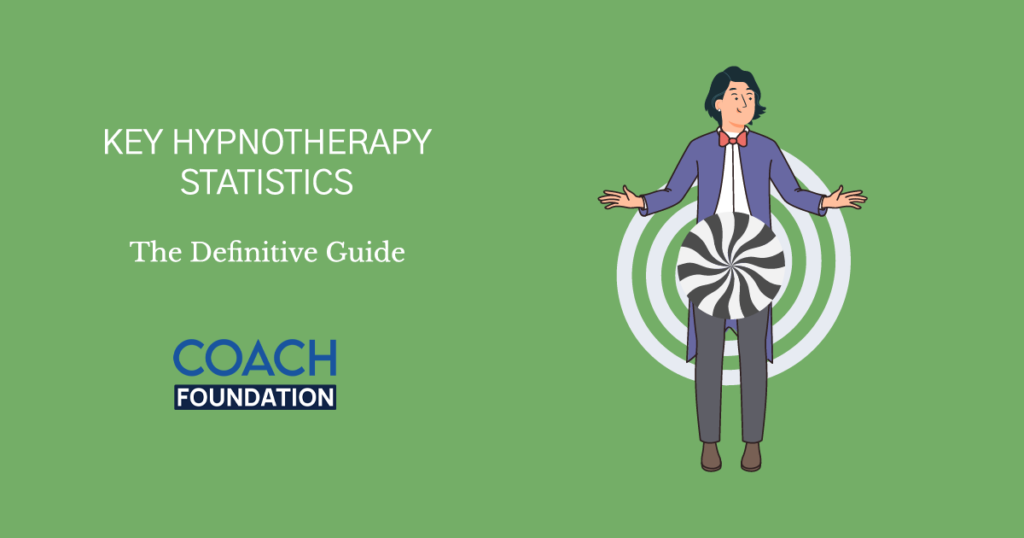







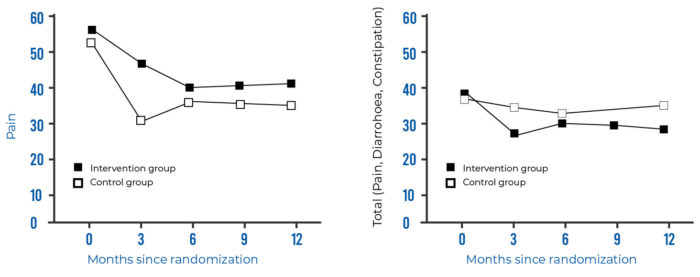
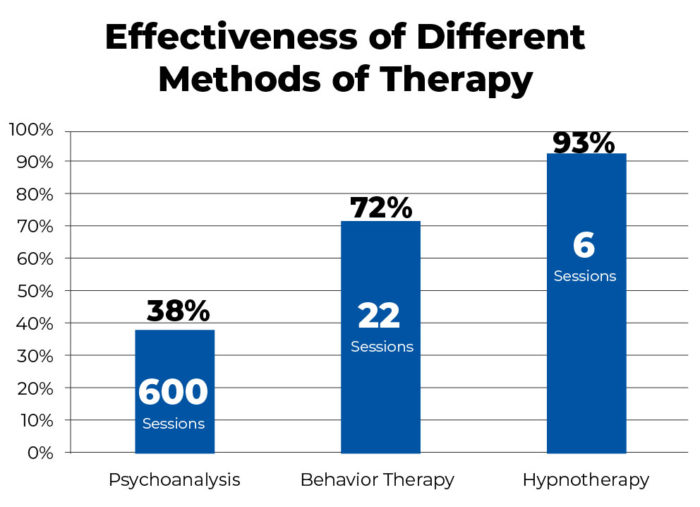
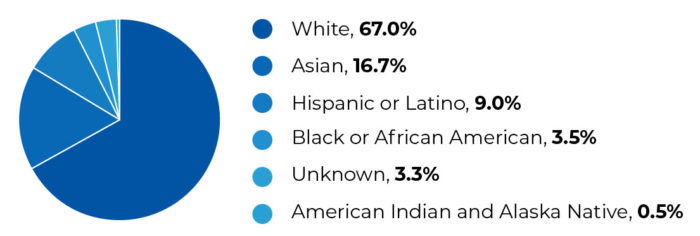
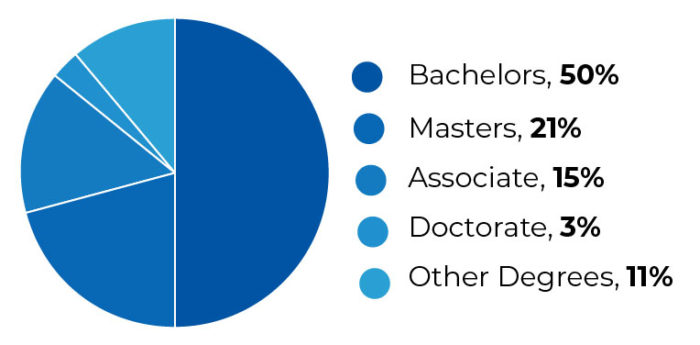

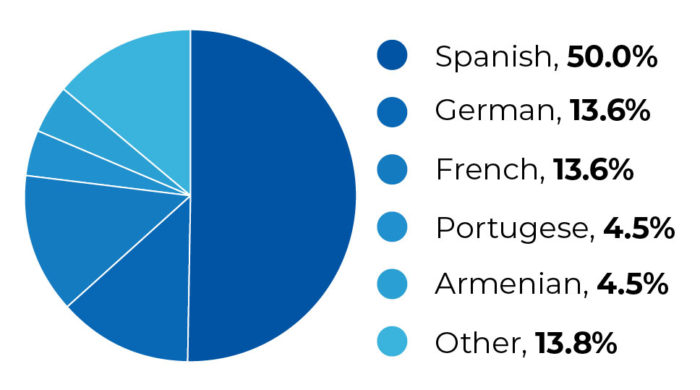





Thank you for the statistics and the citations! I had no idea hypnosis was so effective and that the evidence proves it.
This article was truly enjoyable, thank you! Fantastic job!
Thanks for the well-presented post!